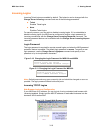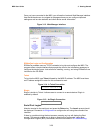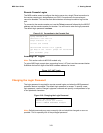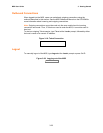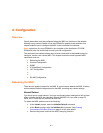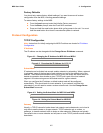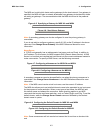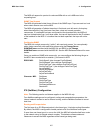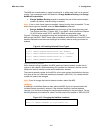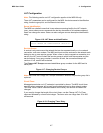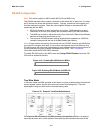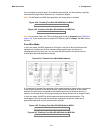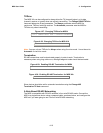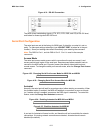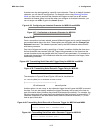MSS User Guide 4: Configuration
4-5
The MSS will respond to queries for unknown MIBs with a not in MIB error to the
requesting host.
SNMP Trap Support
The MSS will generate limited forms of three of the SNMP traps. Traps are sent to a host
when certain events occur on the MSS.
The MSS will generate a Coldstart trap when it first boots, and will send a Linkup trap
when the startupfile (if any) has been read from a host and normal operation
commences. If a startupfile has been configured but the download fails, the MSS will
send an Authentication trap. In all three cases, the trap will be directed to the IP address
of the loadhost for the MSS. If a loadhost has not been specified, the traps will not be
sent.
Configuring SNMP
The MSS has a single community (“public”) with read-only access. You can optionally
add a single community with read-write access using the Change Server
SNMPSetComm command with the MSS-VIA and MSS4 or the Change
SNMPSetComm command with the MSS100. See the MSS Reference Manual for more
details.
Once you enable an SNMP write community, you can configure the following things on
the MSS. Items marked with an asterisk (*) are saved to NVR.
RS232 MIB:
PortInSpeed* (also changes PortOutSpeed)
PortOutSpeed* (also changes PortInSpeed)
PortInFlowType* (also changes PortOutFlowType)
PortOutFlowType * (also changes PortInFlowType)
AsyncPortBits*
AsyncPortStopBits*
AsyncPortParity *
AsyncPortAutobaud
Character MIB:
PortName
PortReset
PortInFlowType
PortOutFlowType
PortSessionMaximum
SessionKill
IPX (NetWare) Configuration
Note: The following section on Netware applies to the MSS100 only.
Four NetWare settings can be configured: routing and encapsulation parameters, the
internal network number to use for internal routing, and the NetWare loadhost to use at
boot time.
Routing and Encapsulation
The first layer of an IPX Ethernet packet is the frame type. It includes routing information.
By default, the MSS is configured to handle packets of all four NetWare frame types.
If more than one frame type is in use on the LAN, the MSS will advertise itself as a router
to the network using its internal network number. This behavior allows nodes and
fileservers to access the MSS regardless of the frame type being used.



